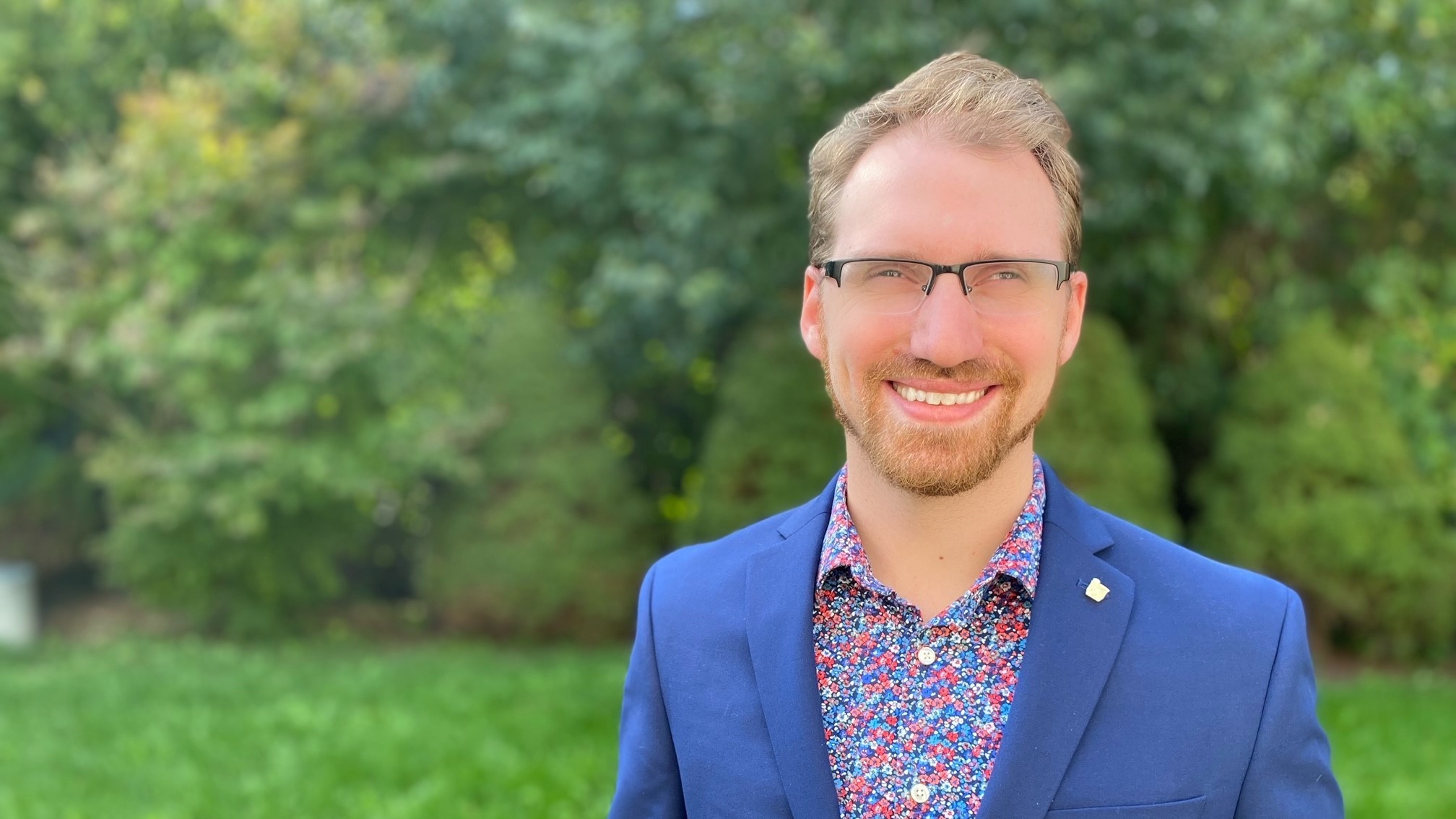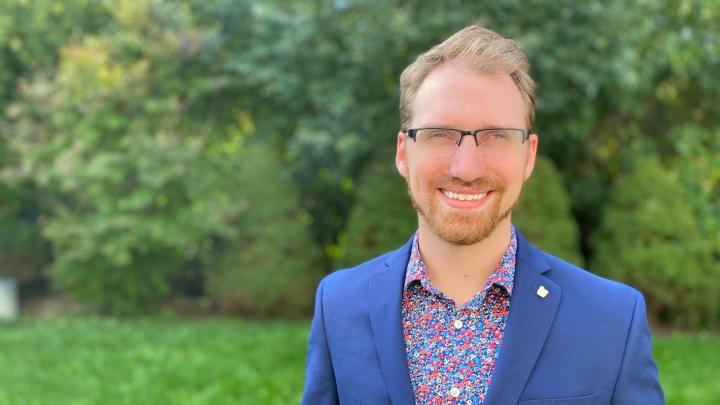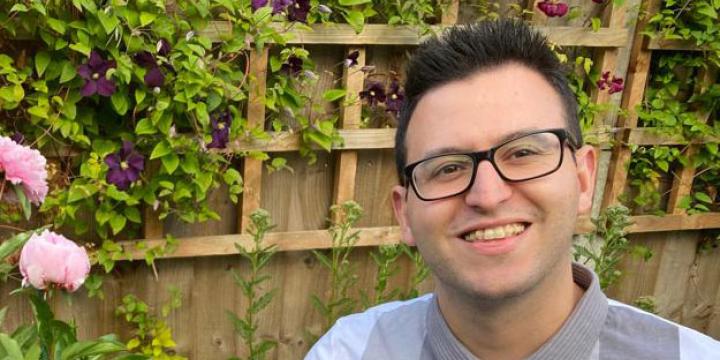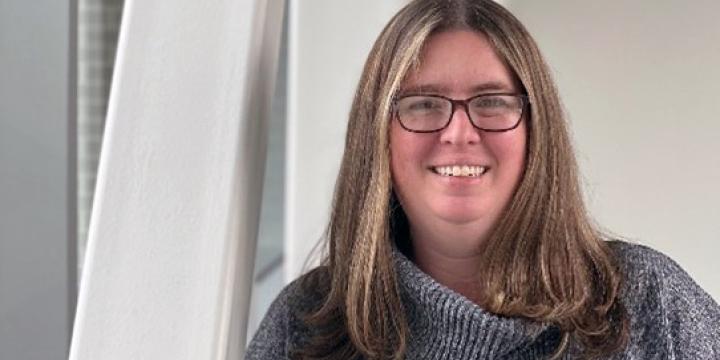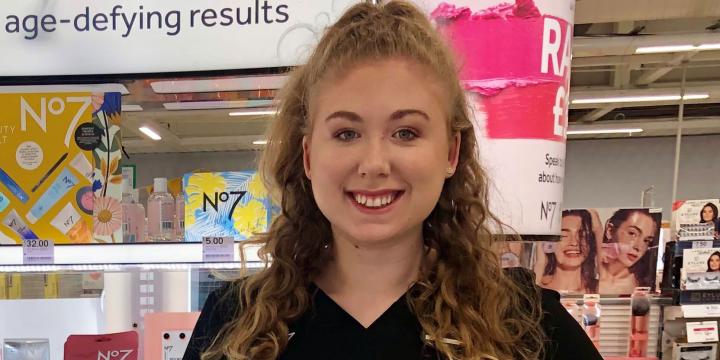I’m Jacob Lambert, and I have the privilege of serving as a manager on behalf of the field communications and feedback team at Walgreens. As a former journalist with a deep passion for the art of communication, I’m fortunate to spend my days influencing the ways our teams across the enterprise are connecting with their peers through clear, concise and compassionate messaging.
In my role, I support team members at all levels of the organization with developing, drafting and deploying tactical, internal communications intended to inform, influence and inspire our store and field teams. Whether creating awareness of a new project, building a persuasive business case for a new strategic approach or offering transparency in turbulent times, behind every field-facing communication is a team like ours committed to crafting a message that meets the moment.
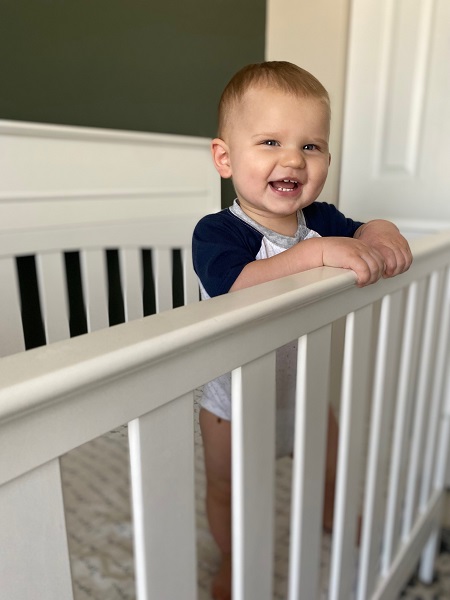
5 a.m. – The day begins with a granola bar, a full glass of water and a trip to my local gym for a routine workout. I’ve never considered myself a “morning person,” nor am I particularly fitness obsessed. For me, carving out these early morning hours is an intentional exercise in self-care, capitalizing on time in service to myself before diving into a day spent in service to others.
7 a.m. – I’m knocking-out some time-sensitive tasks before partaking in what is—without fail—the absolute best part of my day: getting my wide-eyed, 15-month-old son, William, out of the crib and ready for another day of adventure!
8 a.m. – Quality breakfast time with William, my wife, Jenelle, and our dog, Jackson, who’s a Labrador-Great Dane mix. This is special and generally non-negotiable time that fills my proverbial cup (my physical cup is, of course, filled with coffee).
9 a.m. to 5 p.m. –The work day begins! Every day is different and can include proofreading and launching various communications, hosting conversations with team members, advising business partners on communications strategy, preparing talking points for an upcoming event or podcast recording, touching base with the disAbility Alliance Business Resource Group (BRG) leadership team and whatever else is pressing.
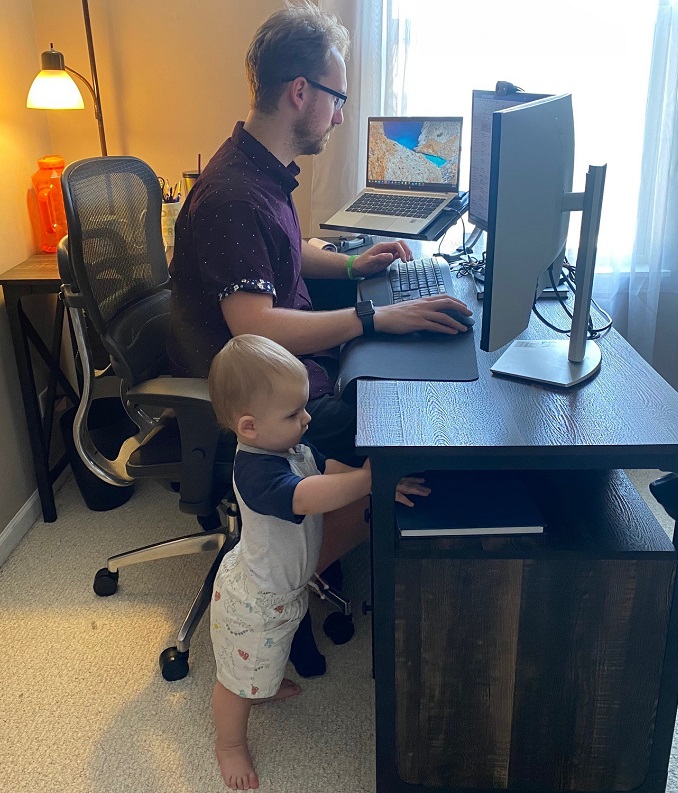
Thanks to the ongoing flexibility of hybrid work, my daily blend of calm and chaos is often spent alongside the most loveable office companions. After William was born, Jenelle selflessly sacrificed her job as a music teacher to take on the equally admirable role of stay-at-home mom. The ability to share our days together, seamlessly shifting between work and what I affectionally refer to as “dad mode” (a.k.a. playing a rousing game peek-a-boo from behind the monitor, changing a diaper, or looking after William while mom is out, etc.) is–to me–the epitome of work-life integration. Of course, this integration is all made possible by Jenelle – the woman in the center of it all!
Additionally, I’m grateful to be a part of a team and an organization that embraces this integration, especially in those moments where work mode and dad mode inevitably intersect, and William makes a cameo appearance on a meeting with a smile that turns any routine conversation into a moment of pure joy for all.
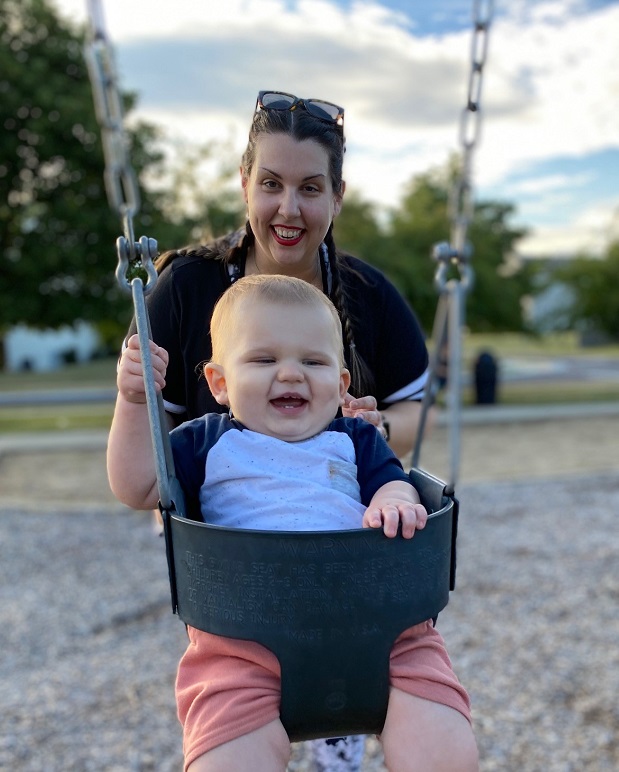
5 to 8 p.m. – Back to quality time with the family – hopefully with some of it spent outdoors where a little fresh air and playtime help keep everything in perspective.
8 to 10 p.m. – By now, William is (hopefully) fast asleep and it’s time to tackle follow-ups I consider “first thing” priorities for the day ahead (I also use this time to preview the work calendar and prep for the next day’s meetings, as needed. I find a little proactive preparation goes a long way in mitigating workflow disruptions, especially when those unexpected ad hoc requests inevitably come around).
Over the years, my time spent studying and drafting communications has repeatedly reinforced a single characteristic as crucial to any great piece of writing: authenticity. The courage to offer sincere and often vulnerable perspectives that make us unapologetically unique has an unmistakable impact on how messages are received and remembered.
As someone born with Cerebral Palsy, I have grown accustomed to navigating the world with an innate sense of vulnerability that presents itself with literally every step I take.
This apparent disability that mainly impacts my posture and coordination can make the seemingly mundane task of movement from one place to another a challenge, not to mention the side effects that come with a body never quite in balance, like fatigue and a remarkable tolerance for chronic pain. That said, as a relentlessly glass half-full guy, my disability equally serves a humble and persistent motivator to appreciate all I can do, while steadily working toward accomplishing many of the things I’ve been repeatedly told I can’t.
I’m also someone who’s learned not to take it all too seriously. I often refer to my noticeably labored stride as “the swagger I was born with,” bringing laughter and light-heartedness into any situation as a way of signaling to others that I’m comfortable with me and they can be, too.
Confidence in my disability identity has been instilled in me from an early age. I was encouraged and empowered to embrace my uniqueness and take pride in my disability by my family. This empowerment is ultimately what led to my taking on what I would argue is one of the most vulnerable hobbies out there: musical theatre. Every summer was a new community production that I didn’t realize back then was subtly instilling a stronger sense of confidence every time I took to the stage and performed under the bright lights—disability and all—in front of friends, family and strangers.
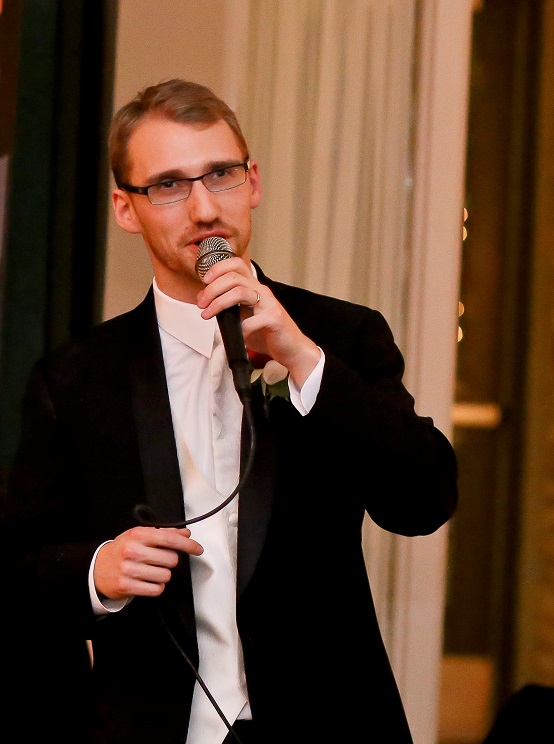
Beyond giving me an intense love for all things Broadway and a more than occasional desire to break into song, I’m convinced these experiences played a pivotal part in shaping the person I am today.
Still, the limp in my walk will, to this day, prompt unsolicited questions from teammates witnessing this for the first time. Questions like, “Are you OK? Did you hurt yourself?”
It’s well-intentioned remarks like these that always bring the following thoughts to the forefront of my mind. First, these questions are almost always offered from genuine place that opens the door for deeper connection and better understanding.
Second, the journey to fostering a stronger workplace culture of disability awareness, acceptance and normalization is one we will forever be on—with each of us at our own stage of that journey and hopefully all committed to moving forward, together.
As the recently elected Chair for our disAbility Alliance Business Resource Group (BRG), it’s my honor and privilege to partner with our 500+ members from across the organization who share in this journey and represent all walks of life. There are folks like me who identify with both apparent and non-apparent disabilities, caregivers, allies and others who identify as all of the above. What unites us all is a keen awareness of the complicated realities faced by the disability community, coupled with a relentless commitment to nurturing personal and professional environments that champion accessibility by adapting to the person, as opposed to expecting the person to adapt to an environment.
This work is never intended as a means to an end, but rather a progressive starting point from which we continue the journey toward becoming an increasingly innovative and inclusive brand that moves beyond recognition of the disability community as “special” and “inspirational,” and instead celebrates the shared experiences that make us all wonderfully human.
